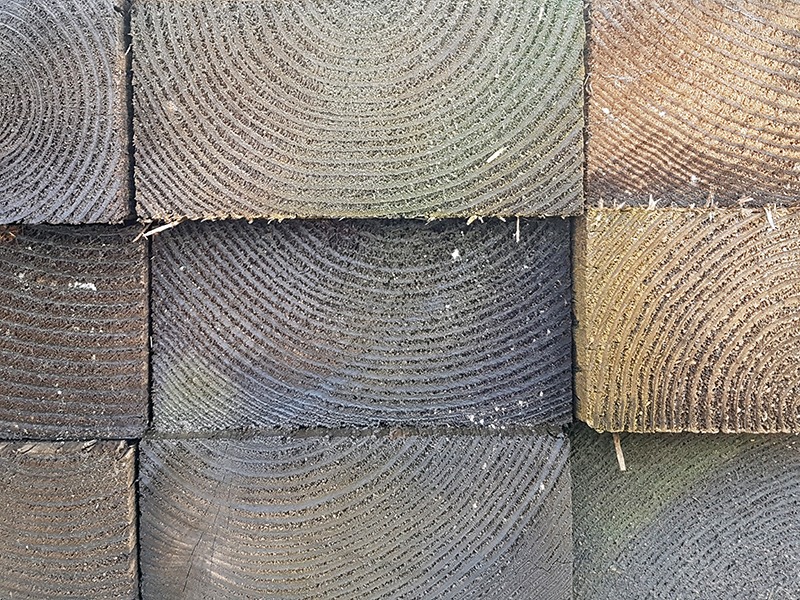As with many other building materials, when you work with Pressure Treated Lumber, standard length fence boards, deck planks, posts or timbers often need precision trimming before they can be fastened* in place.
However, unlike rot-resistant Cedar or dense and durable Hardwoods like Ipe (which require end sealing for different reasons – more on that here), the substrate lumber used for Pressure Treating is not naturally resistant to rot and decay.
suitable lumber
Lumber species used for Pressure Treating such as SPF, Hemlock, Hem-Fir and Douglas Fir, do not possess the same natural resilience as Western Red Cedar, Yellow Cedar or other hardier wood species. Therefore when you trim the end off of a piece store-bought Pressure Treated Lumber, you are exposing wood fibre that is not suitable for exterior application without chemical treatment, to water, fungus and insects that it would otherwise be protected against by the Pressure Treatment.
example of treated wood failure due to not treating end cuts
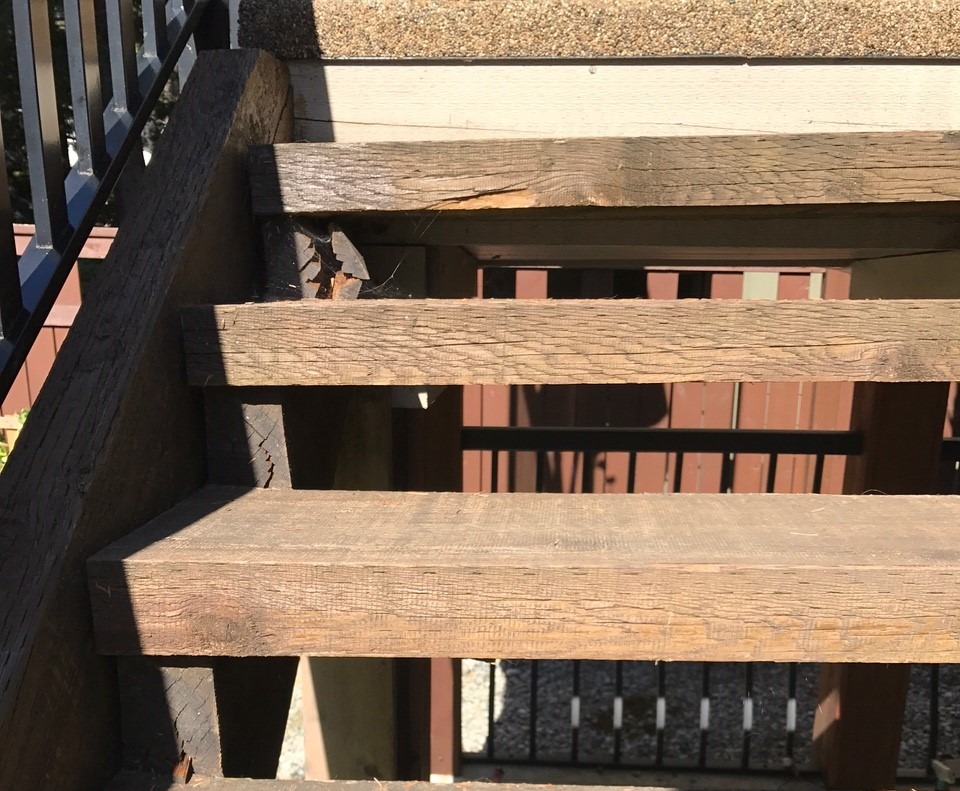
The 3×12 Pressure Treated Wood Stair Stringers in the picture above (left of image) have decayed causing structural issues with this staircase. The wood itself is only 2 years old, but failure to seal the end cuts has allowed water to penetrate into the wood, which has rotted. Had the end cuts been treated, given the thickness of the lumber used, this structure would be without issue for decades.
simple process
Sealing exposed ends is a very simple process which doesn’t cost much money or time – and once you’ve applied an appropriate End-Treatment, you can rest assured that you’ve done a good job and the wood you’ve invested in isn’t compromised by poor workmanship.
IN-GROUND APPLICATION
Whilst treating or sealing any cut ends is important with any Treated Lumber product, maintaining a sealed end is most important when applicating Pressure Treated lumber in-ground, such as Fence Posts and Landscaping / Retaining Wall. Most End-Treatments are designed for use above-ground only, so if you are doing any trimming, it’s important to keep those cut ends above ground – or in the case of tie-backs on retaining wall, facing out so you can safely use an End-Treatment to re-seal the cut ends.
TREATED LUMBER WARRANTY
Many customers don’t realise that Treated Lumber is actually Warrantied on the performance in exterior applications, provided you follow the best practices for handling and installation. Speaking from experience, it is obvious to manufacturers and suppliers if rotten Treated Lumber has gone that way before it’s expected lifespan, due to a failure to adhere to published application and installation guidelines.
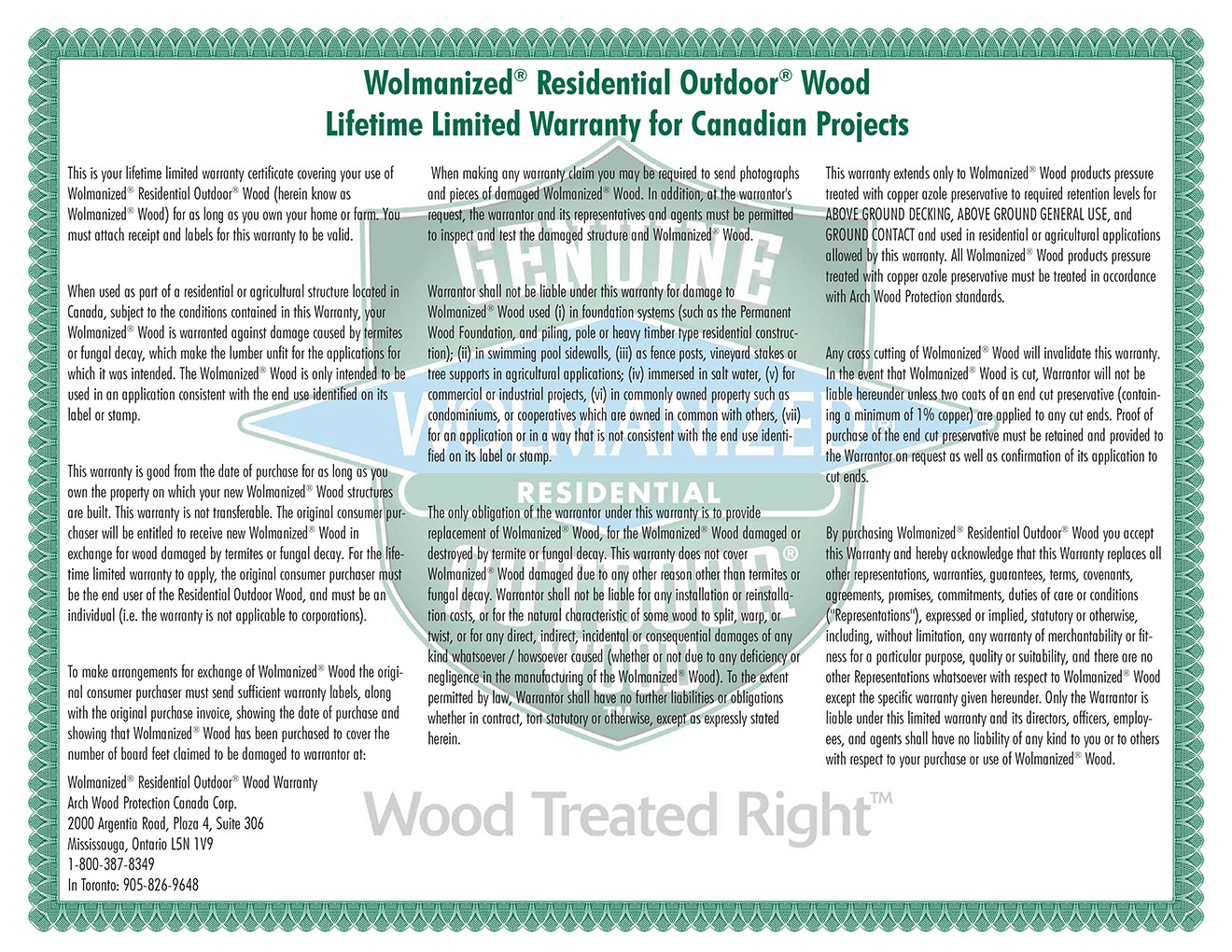
* Always use Stainless Steel, Hot-dipped Galvanized or Zemax Fasteners, brackets and connectors when working with Pressure Treated Lumber. Failure to do so will cause fasteners to corrode and break, which can cause injury and in some cases loss of life.
THE ANSWER? CUT-N-SEAL
Cut-N-Seal® is a water-based brush-on sealer and moisture repellent for cuts and holes in pressure treated wood that exposes untreated wood above ground, on deck boards, railing, post tops, and fence boards.
A 946 ml can (1 quart) will seal approx. 330 5/4×6 deck board ends or approx. 220 2×6 deck board ends, coated twice. A meagre investment at $15 per 946ml
Unlike traditional sealers like Copper II, which if you’ve used it you will know has an incredibly harsh and lasting odour, Cut-N-Seal’s water-based formulation is low odour. It is ready to use, directly from the can, and it cleans up with soap and water.
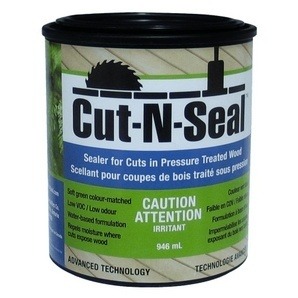
$15 / 946ml + tax (CAD)
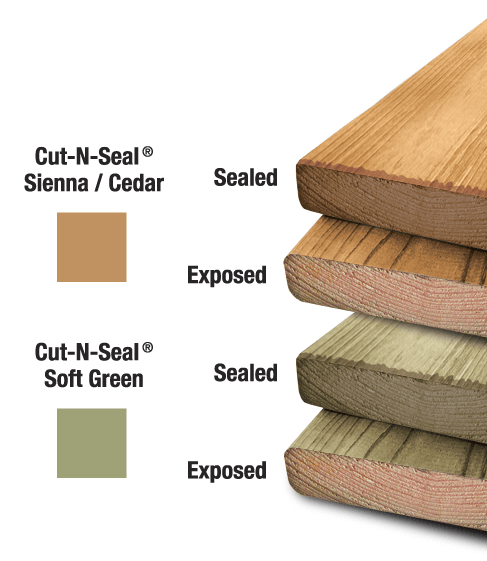
cut-n-seal matches the colour
of brown/green treated lumber
For use on Above Ground treated wood products. Use Cut-N-Seal® on areas that have been drilled or saw cut in treated wood deck boards, railing, post tops, fence boards, etc. Cut-N-Seal is not recommended to replace pressure treatment. Do not use to recoat pressure treated wood surfaces. Do not use for pressure treated wood in ground contact applications or in preserved wood foundations.
pro tip! Treating Drilled Holes for Bolts
Here’s a handy tip for Treating Bolt Holes drilled into Pressure Treated Wood.



